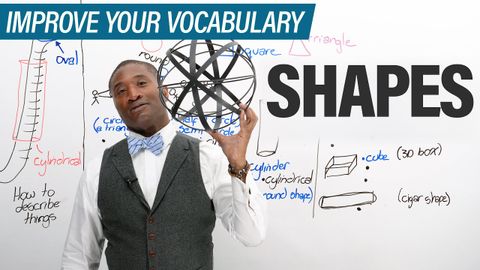英語のボキャブラリーを増やす。シェイプ (Improve Your English Vocabulary: SHAPES)
Summer が 2021 年 03 月 21 日 に投稿  この条件に一致する単語はありません
この条件に一致する単語はありません- adj.異性愛者;異性愛の;正直で直接的;真っ直ぐな;きちんとした
- adv.率直に;まっすぐに;すぐに
- n.異性愛者
- v.t./i.まっすぐにする
US /voˈkæbjəˌlɛri/
・
UK /və'kæbjələrɪ/
US /ˈɪnstəns/
・
UK /'ɪnstəns/
- n. (c./u.)例;発生;インスタンス
- v.t.例に挙げる
- phr.要請で
US /dɪˈskraɪb/
・
UK /dɪ'skraɪb/
エネルギーを使用
すべての単語を解除
発音・解説・フィルター機能を解除
